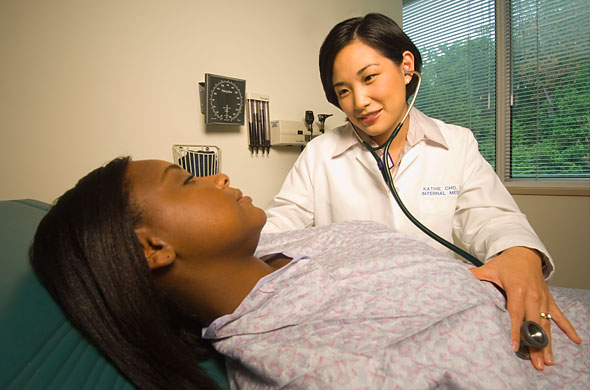
A local model for coordinated care
Evelyn Johnson had no idea that a time bomb loomed in her personal health.
“Obviously I had [diabetes] for some time,” she said. “But I never knew it because I was never diagnosed.”
It wasn’t that doctors overlooked her symptoms. They just never had the chance. Johnson was unemployed and not covered by medical insurance. Like many, the emergency room served as her primary access to health care. But in 2000, she discovered Virginia Coordinated Care for the Uninsured (VCC), a managed care program launched by the VCU Health System to provide access to primary care and coordinate services for uninsured individuals like Johnson.
VCC stems from VCU’s history of exploring and providing for the health care needs of Richmond’s underserved populations. A 1991 study conducted in collaboration with the city of Richmond showed there was adequate primary care in the region, but it was improperly distributed. Following the study, from 1992 to 1999, the university participated in a number of programs aimed at dispersing primary health care to uninsured individuals. In 2000, those efforts culminated into the formation of VCC, which teams the VCU Medical Center with area physicians to provide ongoing care and care management. Prior to VCC, a study including 15,000 medical center patients showed that only 2,500 were engaged with a primary care physician.
“We felt it was important that everyone have access to primary care,” said Sheryl Garland, vice president for health policy and community relations for the VCU Health System, who participated in the 1992 study leading up to VCC. “We also realized that we had a lot of visits to our emergency room that should not have ended up there.”
The issue of emergency rooms clogged with basic health care issues created a problem for VCU’s residency programs. “We were training the ED doctors of the future, but they were seeing folks who came in for common colds and pregnancy tests,” Garland said.
The success of VCC proved staggering. In its inaugural year, the system provided care to approximately 14,500 patients. In fiscal year 2010, that number more than doubled to 30,000. A study led by Cathy J. Bradley, Ph.D., chair of the Department of Healthcare Policy and Research, showed that among VCC participants continuously enrolled during a seven-year period, emergency department visits declined sharply. At the same time, primary care visits increased, while inpatient costs fell year over year — reaching nearly 50 percent. The VCU-led research, which appears in the February 2012 edition of the journal Health Affairs, draws national attention to VCC as a supporting model for managed care plans. As implementation of the Affordable Care Act of 2014 approaches, VCC statistics support the notion that costs associated with populations gaining coverage could be reduced by half.
In addition, the research revealed that the longer a patient was enrolled in the VCC program, the more they became engaged with their primary care provider, said Garland, who co-authored the study.
Johnson, who now actively manages her diabetes and keeps a close eye on her personal health with the help of a primary care physician, serves as an example of the program’s impact. “I will always think very highly of VCC, because it’s a godsend for a lot of people,” she said. “And I am one of them.”

